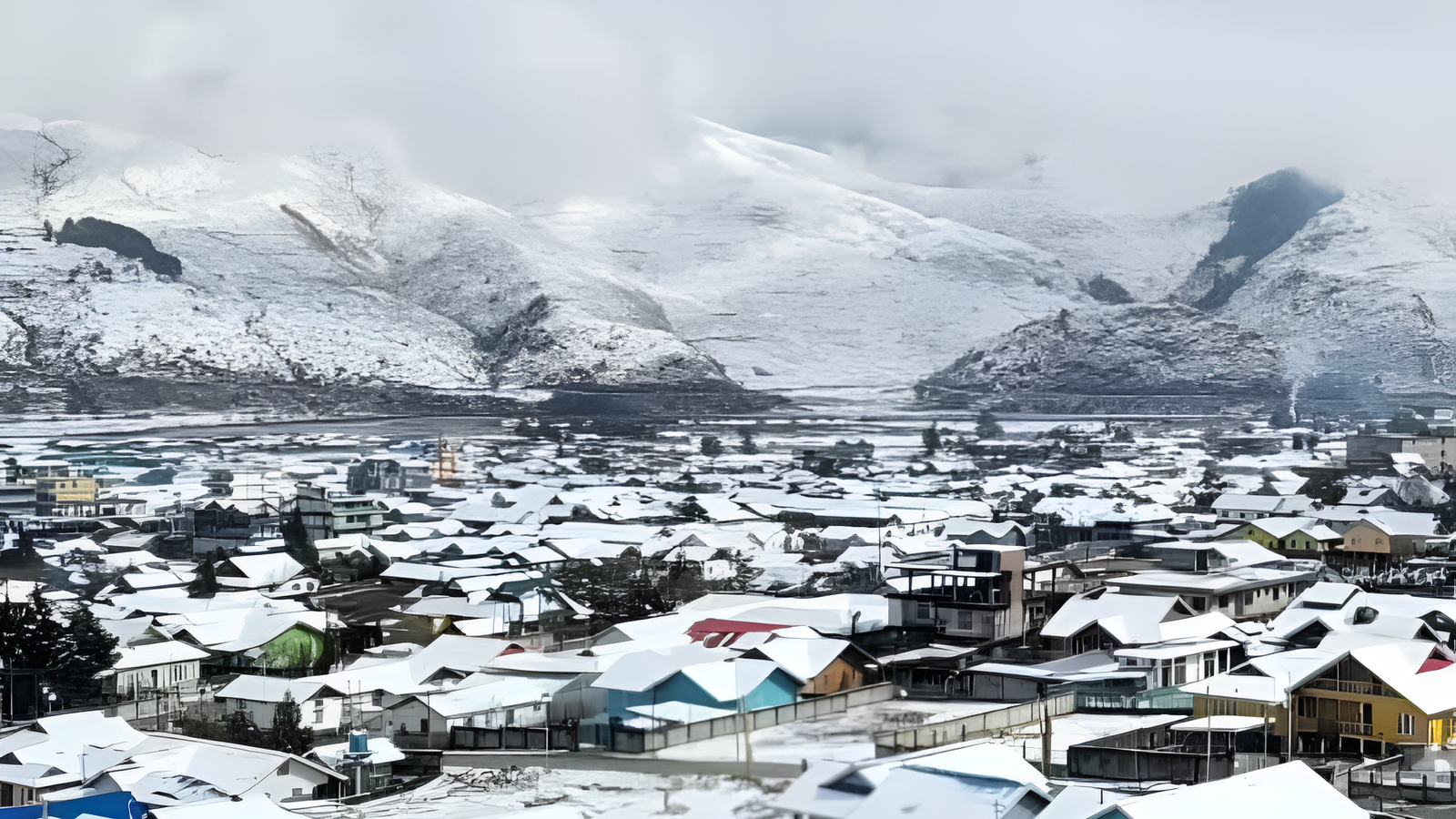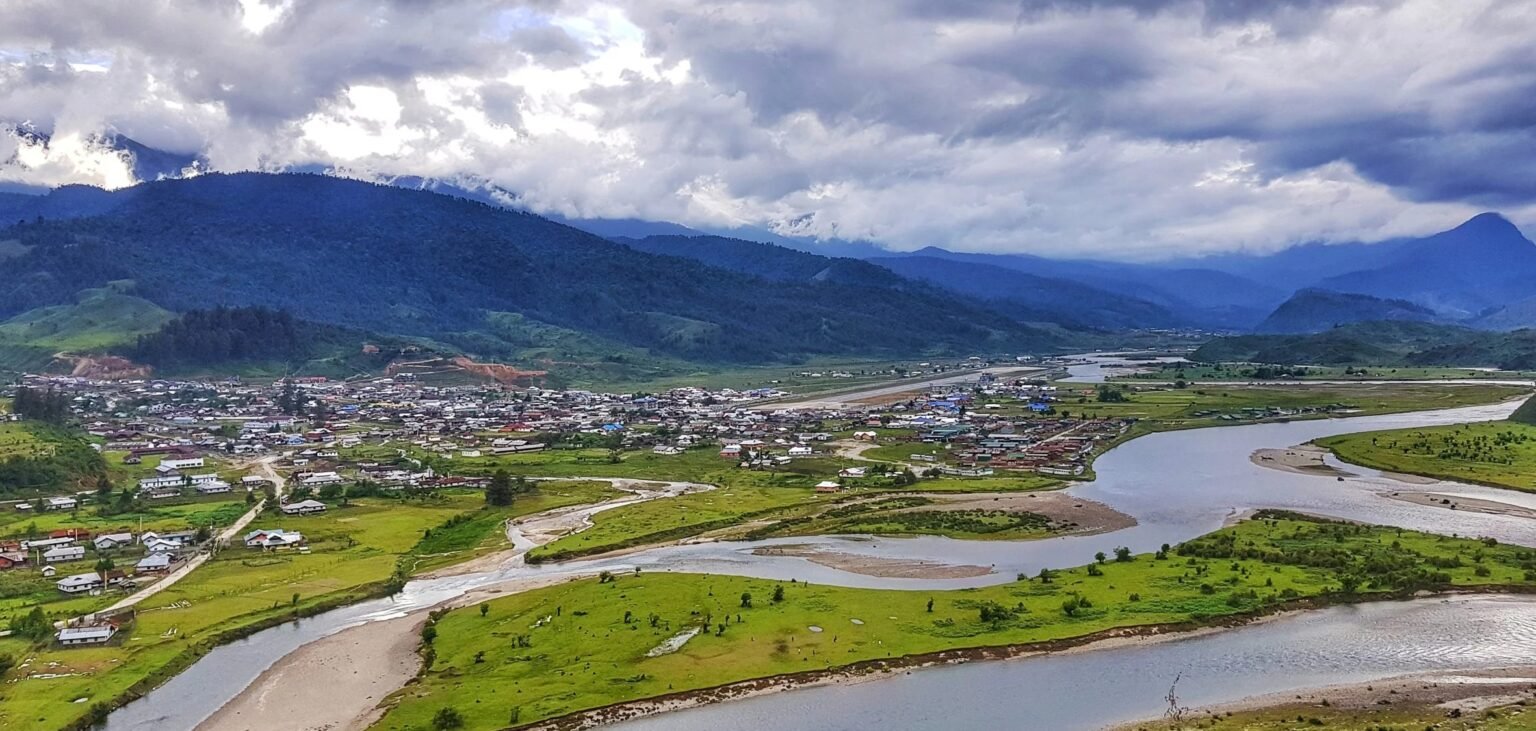Mechuka, a paradise nestled in the Eastern Himalayas of Arunachal Pradesh, is a destination where untamed landscapes, sacred monasteries, and indigenous tribal cultures converge to weave an enchanting tale. Overlooked by mainstream tourism, Mechuka remains pristine, inviting seekers of tranquillity, adventure, and authenticity to discover its secrets.
Nestled at an altitude of roughly 6,000 feet above sea level in the Shi-Yomi region, Mechuka (or Menchuka) sits just 29 kilometres from the McMahon Line, separating India and China. A tapestry of snowy peaks, lush meadows, pine forests, and glistening rivers, the valley is as much a spiritual haven as it is a visual marvel.
Location & How to Reach
Located in the West Siang district near the Indo-Tibet (China) border, Mechuka is accessible via adventurous but rewarding overland routes.
- By Air: The Nearest airport is Mohanbari (Dibrugarh, Assam). Taxis from Dibrugarh to Aalo (Along), then a road journey to Mechuka.
- By Rail: Murkongselek (Assam) is the nearest major train station. From there, head to Pasighat, then Aalo, and finally continue onwards by road.
- By Road: The best option is to reach Pasighat, continue to Aalo by bus/taxi, and catch an early morning Sumo to Mechuka. The journey from Aalo to Mechuka takes 8–10 hours and costs around ₹500 in a shared Sumo.
- Permits: Indian citizens require an Inner Line Permit (ILP); international travellers need a Protected Area Permit.
Key Details:
Additional Notes
- Monsoon is risky: Routes may be impassable due to landslides and rain; always check local advisories.
- The best season is from October to March, offering pleasant weather, cultural festivals, and snow. Avoid June–September due to heavy monsoon rain and road issues.
- Estimated total spend (budget travel): For a 5–7 day trip, expect ₹18,000–25,000 per person, including permits, food, local transport, and stay.
- Entry to most attractions is free or has very minimal local charges.
History of Mechuka
The history of Mechuka is shaped by its strategic location and ancient connections. Once cut off from the outside world, the valley was traversed by nomadic tribes, especially the indigenous Memba, Ramo, Bokar, and Lingbo peoples. Rooted in Buddhist tradition since the arrival of Tibetan monks in the early 20th century, Mechuka also bears marks of its role as a key airbase during the 1962 Indo-China conflict, adding a unique layer to its legacy. Over time, its healing rivers and spiritual aura attracted seekers and travellers alike.
Culture and People
Mechuka’s unique cultural identity is rooted in its blend of tribal traditions and Buddhist spirituality. The Memba tribe, following the Nyingma sect, is the predominant community; neighbouring tribes, such as the Ramo and Tani (including Bokar and Libo), have their own spiritual beliefs, ranging from animism to Christianity. Traditional stories, beadwork, and bamboo craftsmanship abound. The valley celebrates Losar (Buddhist New Year), the Memba Festival, and other colourful occasions with dances, rituals, and feasts featuring local delicacies such as vegetable broth and bamboo shoot curry.
Major Tourist Spots
It dazzles with unrivalled natural beauty, sacred shrines, and adventure opportunities.
- Samten Yongcha Monastery: A 400-year-old Buddhist monastery treasures ancient artefacts and offers panoramic valley views.
- Guru Nanak Taposthan: Revered by Sikhs and locals, this cave-shrine marks Guru Nanak’s meditative stop en route to Tibet.
- Dorjeeling Village: A picturesque hamlet reflecting the serene lifestyle of the Memba tribe, with vast meadows and free-grazing horses.
- Hanging Wooden Bridges: Rustic bridges span the Siyom River, blending thrill with scenic splendour.
- Siyom (Yargyap Chhu) River: The valley’s lifeline, revered for “medicinal snow water” believed to have purifying properties.
- Hanuman Point & Temple: A natural rock resembling Hanuman draws spiritual significance, accompanied by a tranquil temple.
- Yarlung Army Camp: Offers encounters with soldiers stationed near the Indo-Tibet border, with breathtaking Himalayan vistas.
- Siko Dido Waterfalls: A 200-foot cascade located in nearby Irgo village—ideal for nature lovers.
- Mechuka Valley Trek: Trails wind through meadows and pine forests, beckoning trekkers and photographers.
List of Must-Visit Places
| Place | Specialty |
|---|---|
| Samten Yongcha Monastery | 400-year-old relics, scenic hilltop |
| Guru Nanak Taposthan | Sacred Sikh cave shrine |
| Dorjeeling Village | Tribal hospitality, grazing horses |
| Hanging Wooden Bridges | Rustic charm, river views |
| Siyom/Yargyap Chhu River | Scenic river, believed “medicinal” |
| Hanuman Point & Temple | Religious significance, unique rock |
| Yarlung Army Camp | Border base, Himalaya view |
| Siko Dido Waterfalls | Majestic waterfall near Mechuka |
Festivals, Cuisine & Arts
- Festivals: Losar (Tibetan New Year), and the Memba Festival, featuring folk dances, music, and religious rituals.
- Cuisine: Traditional fare includes vegetable broth, bamboo shoot curry, and locally grown produce. Homestays often serve authentic dishes.
- Handicrafts: Local beadwork, hand-woven bamboo artefacts, and tribal jewellery showcase Mechuka’s artistic traditions.
Adventure and Activities
- Trekking: Numerous trails, notably the trek to Mechuka La and hikes around the valley.
- Photography: Stunning sights of snow-capped peaks, misty rivers, and unspoiled villages draw shutterbugs year-round.
- Village Walks: Cultural immersion and interaction with locals open windows to traditional wisdom and daily life.
- Nature Observations: The region is renowned for its rare fauna, including the Mechuka Giant Flying Squirrel.

Stay & Accommodation
Homestays and boutique guesthouses are the norm for accommodation in Mechuka, fostering direct engagement with local families. Options include:
- Gayboo’s Traditional Homestay
- Potala Homestay
- Yargyap Chhu Homestay
- The Myst Hotel
These stays immerse guests in the warmth of tribal hospitality and home-cooked meals.
Economy & Tourism Revenue
Tourism now forms a backbone of the local economy. The rise in footfall has helped homestay owners, local guides, and traders flourish, bringing steady revenue and boosting the overall standard of living in the valley. The government’s “Vibrant Village Programme” further fuels development and infrastructure growth, ensuring sustainable livelihoods while preventing rural outmigration.
Travel Tips & Essentials
- Best Time to Visit: October to April for scenic beauty, post-monsoon clarity, and pleasant weather.
- Permits: Always secure the required ILP/PAPs prior to arrival.
- Connectivity: Remote, with limited phone/internet access, enhancing its “off-the-grid” appeal.
- Cash: ATMs are scarce; carry sufficient cash for the duration of the trip.
Recent News
In 2025, Mechuka was honoured as India Today’s top mountain destination, capping years of growing acclaim for its cultural richness and unspoiled beauty. As the world’s eyes turn toward Arunachal Pradesh’s borderlands, the valley’s blend of sweeping landscapes, ancient traditions, and borderland hospitality welcomes a new era of mindful, sustainable exploration.
FAQs About Mechuka
Where is Mechuka located?
It is in the Shi-Yomi district of Arunachal Pradesh, approximately 29 km from the McMahon Line, which borders Tibet (China).
What is Mechuka famous for?
It is renowned for its untouched natural beauty, ancient Buddhist monasteries, indigenous tribal culture, and its status as a Himalayan adventure and spiritual destination.
How do I reach Mechuka?
Travellers reach Mechuka by flying to Mohanbari (Dibrugarh), taking a taxi to Aalo, and then continuing by road. The nearest railway is Murkongselek, Assam. Permits are mandatory.
What are the must-visit places in Mechuka?
Key attractions include Samten Yongcha Monastery, Guru Nanak Taposthan, Dorjeeling Village, hanging bridges, Siyom River, Hanuman Point & Temple, Yarlung Army Camp, and Siko Dido Waterfalls.
What is the best time to visit Mechuka?
From October to April, the weather is ideal for pleasant conditions, lush scenery, and local festivals.
Is Mechuka safe for travellers?
Yes, Mechuka is considered safe, and visitors are welcomed by the friendly local communities.
What is the significance of the “medicinal snow water”?
The Siyom River’s glacial waters are esteemed by locals for their purity and supposed healing and spiritual cleansing properties.
How has tourism impacted Mechuka’s economy?
Tourism has empowered local families through homestays, guided tours, culinary ventures, and handicrafts, offering sustainable livelihoods and fueling community-focused development.
